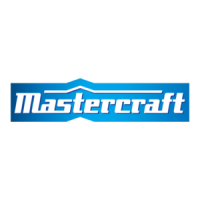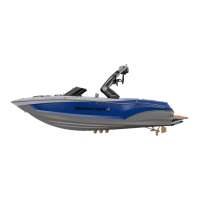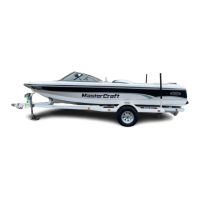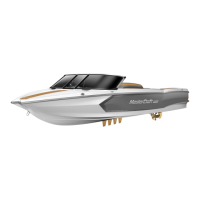381
/
2023 OWNER’S MANUAL
Inspect the Complete Fuel System for
Leakage and Change Fuel Filter
Although the boat engine is similar to an automobile engine,
the engine compartment diers substantially. The underside
of an automobile engine compartment is totally open to the
atmosphere. This allows complete air circulation and ventilation.
A boat engine is housed in a closed compartment, the underside of
which is the bottom (hull) of the boat.
The enclosed engine compartment limits the ventilation of
gasoline and oil fumes. Because confined gasoline vapors mixed
with a little air can form an explosive atmosphere, it is important
to be especially vigilant in performing the following two (2)
operations:
1. Inspect the boat bilge area under the engine for the evidence of oil
and gasoline—or any gasoline odor. This inspection should take
place the first time the boat is started each day. Raise the engine
cover and visually look at the bilge area under the engine.
2. Run the bilge blower for at least four (4) minutes to ventilate the
bilge area each time before starting the engine.
\
Gasoline is explosive. If a gasoline odor is present or gasoline
is visually observed in the bilge area during inspection, DO NOT
START YOUR ENGINE! Remove the ignition key from the ignition
switch and call an authorized MasterCraft dealer for service.
1. Remove two (2) of the cover screws and loosen the third screw.
Retain the screws for the re-installation process. Swing the cover
out of the way to allow access to the impeller location.
2. Using needle-nose pliers, pull the old impeller out of the casing
3. Install a new impeller. (It is intentionally larger than the case. While
gently squeezing it in, ensure that the paddle wheels angle in the
same direction—counterclockwise—all the way around.)
4. Carefully slide the plate back into place. No silicone is necessary.
Due to the built-in gasket, tightening the screws should
prevent leakage.

